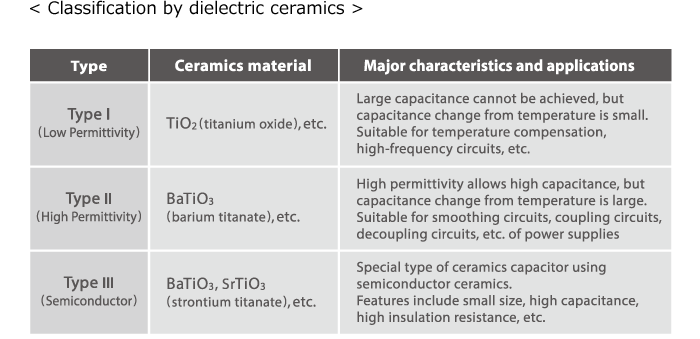Electronics ABC
Capacitors, Part 1 The Basics of Capacitors

Along with resistors and inductors, capacitors make up one of the three major categories of passive components. As many as about two trillion of these devices are being manufactured each year worldwide. The most common type is the ceramic capacitor, but there are many other kinds as well, such as film capacitors offering excellent insulation and stability, and electrolytic capacitors boasting large capacitance values. Different types are used in different ways, to make optimum use of their respective properties and features.
- Operation principle and basic construction of capacitors

- Basic properties of a capacitor (1): "accumulates electric charge"

- Basic properties of a capacitor (2): "blocks DC, passes AC"

- Basic properties of a capacitor (3): "the higher the frequency, or the higher the capacitance, the more easily current can pass"

Operation principle and basic construction of capacitors
The basic form of a capacitor is two electrodes (metal plates) facing each other, with a gap in between. When a DC voltage (V) is applied to the two electrodes, electrons will instantly collect on one side, causing that electrode to have a negative charge, while electrons on the other electrode will be lacking, which means that it has a positive charge. This condition will remain also when the DC voltage is removed. In other words, an electric charge (Q) has now accumulated between the two electrodes. When a so-called dielectric (made of a ceramic material, plastic film, etc.) is inserted between the two electrodes, the dielectric polarization effect results in a higher charge. A numeric value expressing how much charge a capacitor can hold is called the electrostatic capacity, or capacitance (C) for short.
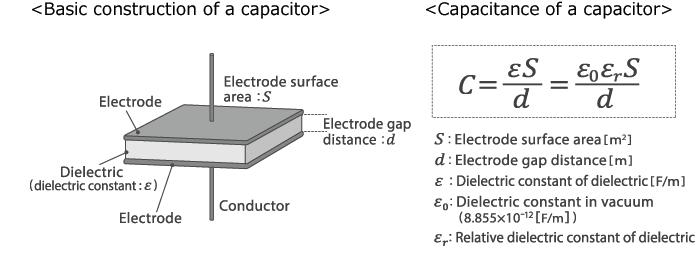
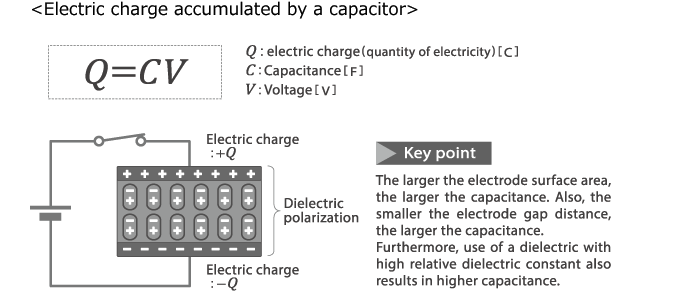
Basic properties of a capacitor (1): "accumulates electric charge"
A capacitor, as its name implies, is capable of storing a fairly large electrical charge, provided that its construction allows a large electrode surface area, and a dielectric with suitably high dielectric constant is used. When a DC voltage is applied directly from a power source, a current will momentarily flow in the conductor. As soon as the electric potential difference between the electrodes is equal to the power source voltage, the current stops and the charging process ends, meaning that the capacitor is charged. The charge and discharge processes are illustrated in the graph below.
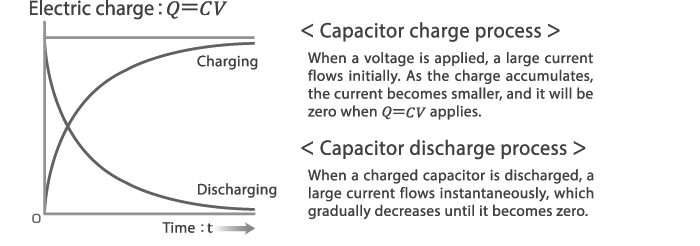
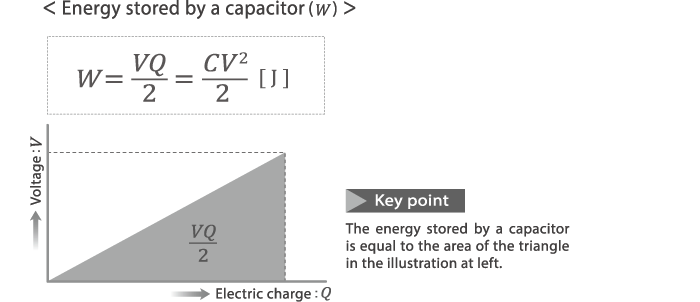
Basic properties of a capacitor (2): "blocks DC, passes AC"
Because the electrodes of a capacitor are separated by the dielectric, a current will flow momentarily in the conductor during the charging process, but the current will not actually pass through the dielectric inside the capacitor. In other words, the capacitor blocks the flow of direct current (DC). By contrast, when an alternating current (AC) power source is connected, the electrodes will alternately repeat a charge and discharge cycle, with the orientation of the electric field being reversed each time. Although there is no actual movement of electrons within the insulator, the effect is the same as if an AC current were flowing. Therefore a capacitor is regarded as passing AC current. Since it differs from regular conduction current, this type of current is called displacement current.
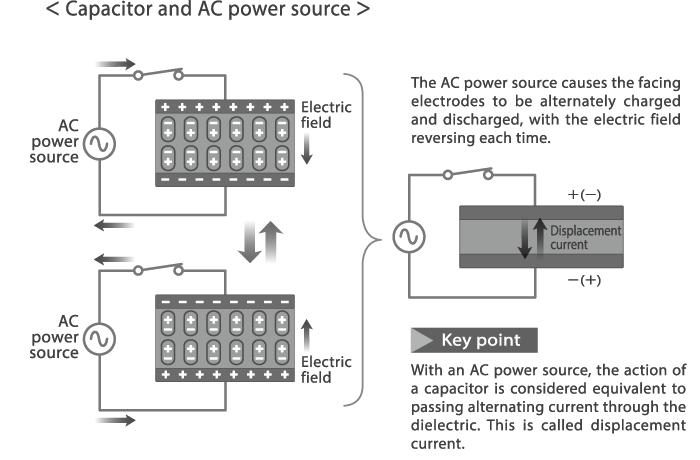
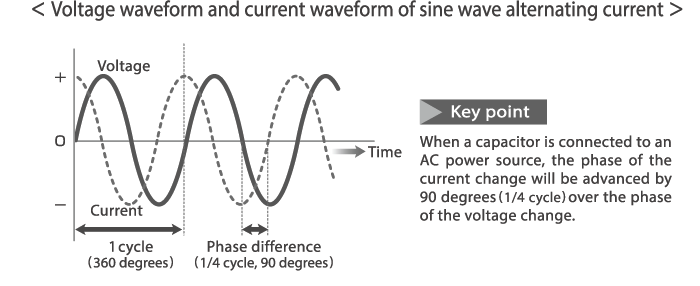
Basic properties of a capacitor (3): "the higher the frequency, or the higher the capacitance, the more easily current can pass"
As we have seen, one of the basic properties of a capacitor is that it blocks DC and passes AC. However, the ability to pass current is not the same for every kind of current. It depends on the frequency of the alternating current, as well as on the capacitance of the capacitor. The degree to which current can pass easily is indicated by a quantity called capacitive reactance(XC)This is the resistance of the capacitor to alternating current, and it is expressed in ohms [Ω]. The equation for the capacitive reactance (XC) of a capacitor is shown below.

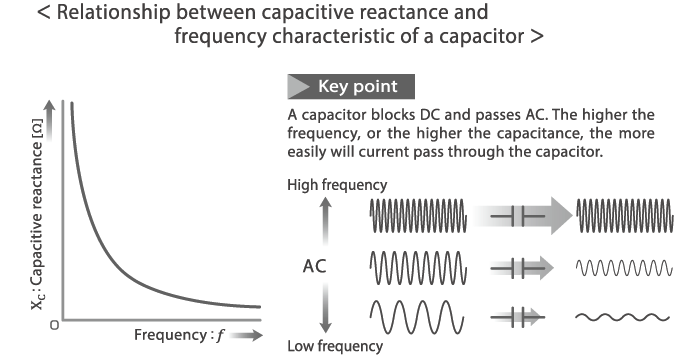
TDK is a comprehensive electronic components manufacturer leading the world in magnetic technology



